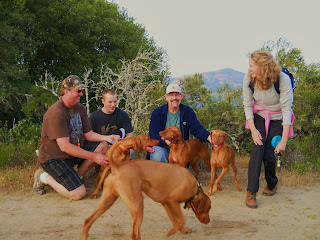"Behavioral characteristics of intact male and female dogs were compared with those of four groups of neutered dogs: those neutered at or before 6 months, between 7 and 12 months, between 13 and 18 months, and after 18 months. Our data showed that the behavior of neutered dogs was significantly different from that of intact dogs in ways that contradict the prevailing view. Among
the findings, neutered dogs were more aggressive, fearful, excitable, and less trainable than intact dogs.
In addition, we measured eight individual bone lengths plus the height of 202 agility competition dogs to determine whether gonadectomy affected bone lengths. Preliminary analysis revealed
significant differences in bone growth between the intact and neutered groups.
Summary
The above data is just a small sample of the significant data that were determined in this study. By using large a sample of dogs than any used previously to examine behavior in dogs, we found significant correlations between neutering dogs and increases in aggression, fear and anxiety, and excitability, regardless of the age at which the dog was neutered.
There were also significant correlations between neutering and decreases in trainability and responsiveness to cues.
The other three behavioral categories examined (miscellaneous behavior problems, attachment and attention-seeking behavior, and separation-related behavior) showed some association with neutering, but these differed more substantially depending on the age at which the dog was neutered.
The overall trend seen in all these behavioral data was that the earlier the dog was neutered, the more negative
There were also significant correlations between neutering and decreases in trainability and responsiveness to cues.
The other three behavioral categories examined (miscellaneous behavior problems, attachment and attention-seeking behavior, and separation-related behavior) showed some association with neutering, but these differed more substantially depending on the age at which the dog was neutered.
The overall trend seen in all these behavioral data was that the earlier the dog was neutered, the more negative
the effect on the behavior. A difference in bone length was found between neutered and intact dogs, suggesting that neutering has an effect on bone growth, which may be related to other orthopedic effects documented in the literature.
Examination of changes in bone length of gonadectomized dogs is continuing.
Examination of changes in bone length of gonadectomized dogs is continuing.











2 comments:
Curious to the number of owned dogs in the US vs dogs in shelters at any given time, # of dogs put down each year, and how spay/neuter has impacted these numbers. Also, is there a difference in the behavioral impact on dogs vs other domesticated animals that are frequently castrated?
My name is Staci and I am an intern at Animal Rescue of Tidewater (ART) located in Norfolk, VA. One of our main goals at ART is reducing the killing of pets within our shelters in Southside Hampton Roads, Virginia. We endorse Trap-Neuter-and-Return (TNR) to help lower the number of strays that run through the neighborhoods. It is truly wonderful to see other shelters and groups supporting spay/neuter. I enjoyed reading your post and all the great information provided. Check out http://www.artanimals.org/wordpress/services to see how we're helping our community with spay/neuter!
Post a Comment